Shedding is a normal process that a bearded dragon passes through and is scientifically called ecdysis. When it’s time to shed, their skin becomes very tight. A change in skin color is always visible. It will always be dull and will become white before being shed. Don’t be concerned – this is very normal.
The most common signs of bearded dragon shedding:
- It may become a bit sleepy or even lethargic;
- Irritation;
- Loss of appetite;
- Not wanting touches;
- More patches of skin inside the tank;
How does their behavior change?
To remove skin during the ecdysis, bearded dragons will do the following:
- Scratching their body with their legs in a reflexive manner;
- Their body rubbing against harsh surfaces;
- They relax their skin by rubbing it against rocks, branches, or bark;
To speed up the process, many pet owners add sandstone slabs and tiny pools to their pet’s habitat. It’s important to note that you should never peel or remove the old skin from your reptile. Injuries and infections may occur as a consequence of this.
How often do bearded dragons shed?
It is dependent on their age. Bearded dragons that are younger shed significantly more often than those that are older. Growth is the cause behind this. When these reptiles are young, they develop at a somewhat slow pace. They’re really outgrowing their skin as a result of this! Unlike humans, who have skin that grows with them as they get older, beardies have skin that is organized differently.
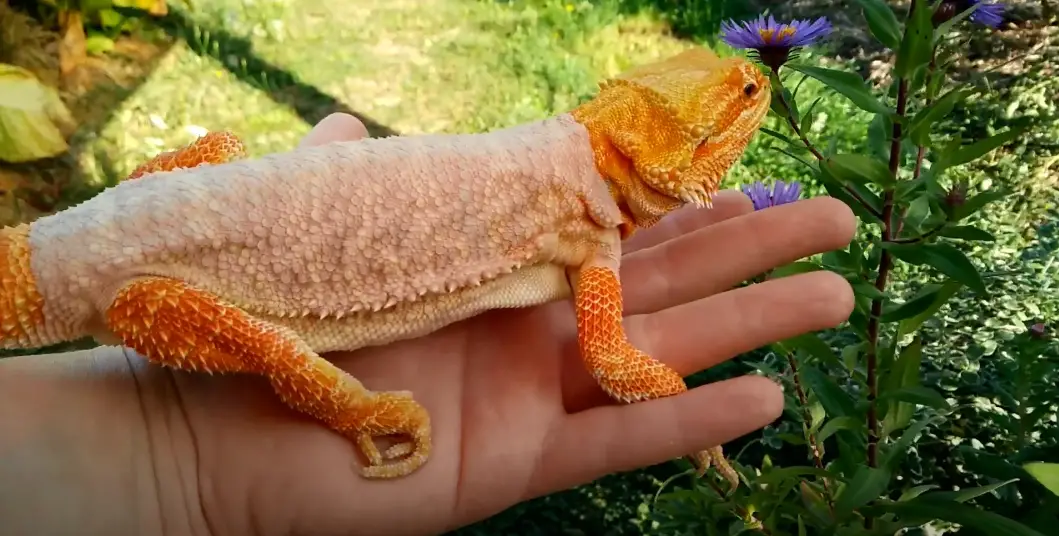
Based on basic age groups, you may approximate how frequently a lizard will shed. Some people will definitely shed more than others, but the following numbers are very typical averages:
- 0 to 24 weeks. At this age, the shedding will occur often. This is when little pets are developing the greatest, and their skin is unable to keep up. Approximately once a week, a complete shedding cycle will occur. Shedding in juvenile bearded dragons differs from shedding in adult dragons. It doesn’t occur all over their body at once, but rather appears at different places across their body;
- 24 – 48 weeks. Your pet will start to shed less often at this age. Their pace of growth is slowing, and as a consequence, they aren’t shedding as much. You should anticipate shedding to start twice a month at the start of this age range and progress to once every other month by the end;
- 52 weeks (one year). The pace of shedding will start to slow down at this time. On average, your pet will shed just a few times each year;
- One year and a half. When your bearded dragon reaches the age of 1.5 years, he or she will stop shedding. They’re fully developed at this time and will shed more like a “skin refresher” than anything else. Once the bearded dragon reaches this age, you may anticipate them to shed only 2-3 times a year;
How does the behavior of your bearded dragon change during shedding?
While there shouldn’t be any significant changes in behavior, there are a few minor ones to be aware of. These may sometimes indicate that your beardie is about to shed (particularly if they’re at an age when it happens more regularly).
Their activity level may decrease somewhat, and they may even begin to consume less food. Even if they’re used to it, your beardie may grow more reluctant to handling. This is because being handled or grabbed makes them feel uncomfortable.
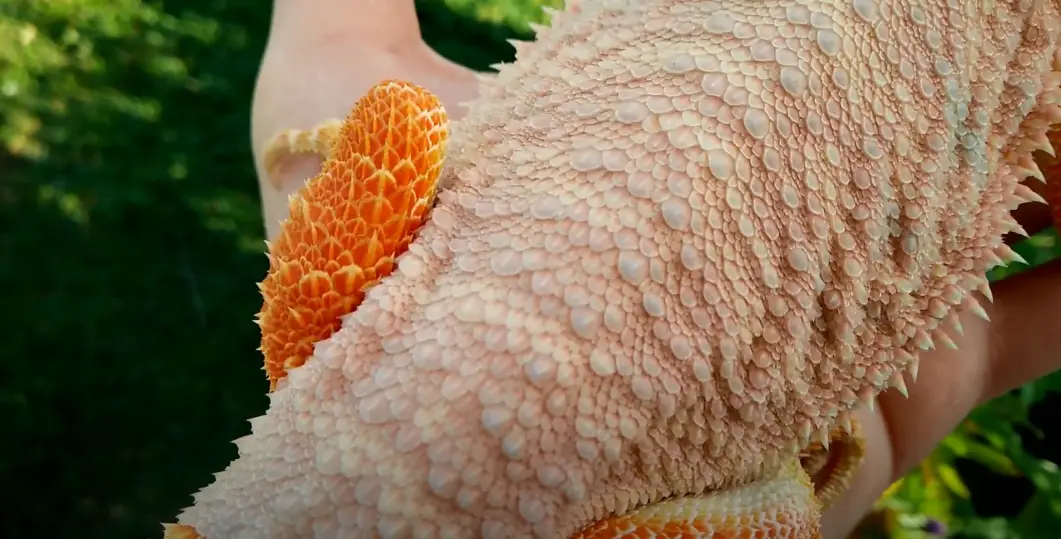
Leave your bearded dragon alone if it begins to shed and makes it apparent that they don’t want to be taken up. All you’ll do is add to their anxiety (and it may even bite).
How can you help your bearded dragon to shed?
Set up the proper habitat conditions
Providing your bearded dragon with a suitable cage and habitat arrangement is one of the greatest ways you can help them shed. Giving them the best possible environment in which to shed is the most effective way of assisting them, and it also allows you to be hands-off throughout the process.
Having the proper arrangement, as well as a diversity of surfaces inside the configuration, can greatly assist matters. You should provide:
- Branches and twigs;
- Rocks;
- Substrate;
- Slate;
All of these objects may soften and remove the tough body parts during shedding.
As a result, make sure there are lots of natural decorations. These are essential not only for your bearded dragon’s general richness and quality of life but also for shedding.
These items may assist them in naturally removing any skin that has been trapped but is ready to fall off. It’s a lot better to let these objects be accessible and let nature take its course.
It’s also crucial to provide your bearded dragon with enough UVB illumination. These are not only beneficial to their overall health, but they will also aid in their weight loss.
Let the skin come off naturally, do not pull it
Resist the urge to pull it off, even if it seems to be ready to flake off but is stuck. When it’s time, it’ll come off. When a bearded dragon begins shedding, many novice owners make this mistake. They do it with the best of intentions, but it just makes matters worse.
By attempting to remove the skin yourself, you risk injuring your beardie and causing wounds or infections. It will also be quite painful for your lizard.
Occasionally mist the pet and its habitat
It’s something that may seem odd at first. Misting your pet a little more than usual, on the other hand, may definitely help them shed. While it may seem that dry skin would peel off more easily, the increased moisture will aid in the removal of their skin. It will also keep them comfy and hydrated through the process.
The sweet spot is giving them a brief spray 2-4 times each day, depending on how they’re doing with the shedding process. Any more than that will almost certainly result in the enclosure’s humidity increasing faster than you’d want.
Give a bath to your pet
Consider this a more active kind of aid than more misting. If other treatments aren’t working, and there’s some skin that truly needs to come off (you’ll become better at gauging this over time), this is typically the best option.
Check that the water is lukewarm but not too hot. During this process, don’t be too hands-on with your beardie. Allow them to absorb the water instead.
The water will relax their skin over time, making it simpler to remove. Bath time should be kept to a maximum of 30 minutes.
Because your beardie’s skin is entirely made of water, it must be cracked in order for any water to reach the shedding regions.
Increase its tank (vivarium) humidity
It helps to some degree since it is also a hydration option — a well-hydrated pet sheds more effectively. For them, this is a very natural answer. They will develop burrows as freely and spontaneously as they would in the wild. Burrows are typically 8 to 12 inches underneath the surface.
The humidity within these burrows may reach 80 percent without difficulty. Any shedding skin will be softened by the dampness in the burrow. It will also assist if there is a bit more humidity in the evenings and mornings.
Apply special shedding oils
Shedding solutions and oils are the last options for assisting a trapped shed. A shedding oil is a spray designed to assist in the moisture of a trapped shed. They should only be used as a last option after misting and washing. The fingers and tail are the most prevalent sites for trapped shed. Unfortunately, a clogged shed might go undetected for months, resulting in necrosis. This is the fundamental reason why bearded dragons often lose part of their limbs or tail as they get older. To prevent inflicting discomfort, always be gentle while assisting a jammed shed.
The problem of stuck shed
Stuck shed (scientifically known as dysecdysis) may cause serious problems and cause restricted blood flow, small infection and even loss of limbs. The stuck shed may affect one or several areas of the pet’s body – feet, tail, eyes, belly or the head’s top.
The causes of the stuck shed in bearded dragons may depend on different factors but the most common reasons are lack of surfaces and substrate in their environment.

Here is what you can do with the stuck shed condition of your bearded dragon:
- Sometimes the stuck shed is a result of a bad diet that lacks B, E, D3 vitamins, magnesium or calcium. Use the appropriate supplements prescribed by your vet to fix this problem;
- Make sure the pet is fully hydrated with live food. Extra hydration can be added with some lettuce and cucumber slices;
- Always pay attention to the zones of feet, eyes and tail. When your pet completes the shedding, take a closer look at these potentially problematic areas – they should be clean, fresh and without any stuck on them;
- If the shed doesn’t come off naturally and you notice the infection signs or swelling around it, immediately go to a local vet;
FAQ
How long do bearded dragons shed?
The whole process will take around a week from start to finish. But if it’s a bit longer, and it’s not creating any problems, it’s not a big deal.
What to do if the dragon is not eating when shedding?
Bearded dragon keepers are well familiar with this problem. Many reptile species, in fact, suffer from the shedding/pre-shedding blues. They may stop eating, hide, or become less active as a result of this. This normally only lasts a few days. Alternatively, a couple of feeding days. Again, don’t be concerned. If you observe shedding occurring or about to happen, it is usually the reason. Of course, examine your beardie thoroughly. Check for any of the concerns described above, and if no shedding is occurring, schedule an appointment with a veterinarian.
Regardless, it’s important to keep an eye on your pet’s weight if they refuse to eat. It’s not so much of a problem for a ‘healthy’ adult who has a stockpile of nutritious stores throughout the body. And you’ll seldom observe any weight reduction. Even after a few weeks without eating. Consult your veterinarian if you’re losing weight since there might be other problems (parasites, etc.).
Going off food might be more difficult for a newborn or younger beardie. In any case, shedding seldom affects them in their first year of life because of their nature and philosophy of feed to grow larger.’ If it happens, it will only be for a day or two.
Why is the bearded dragon not losing its shed?
For an adult pet, do not worry much. They will shed when they need to if you have good UV illumination, the right heat gradient, hydration, and a healthy diet. Consider this a new set of clothing for an adult beardie. If everything is taken care of, it will happen eventually.
If your pet isn’t shedding at this age, consider seeing your veterinarian. As previously said, your beardie will be unable to utilize what it has developed over millions of years to go through such a process without the usage of adequate heat and light, hydration, vitamins, and food.
If everything seems to be in order, schedule an appointment with your veterinarian. Because there might be underlying difficulties such as parasites or cohabitation.
Is it normal for a bearded dragon to eat the shed skin?
This isn’t a problem as long as your setup is clean and the skin you ate wasn’t in any feces. This is also a typical behavior among many lizard species, especially geckos. Calcium and other vitamins are found in the skin. It’s also supposed to be tied to eradicating any evidence of their presence in a given location.
Why is the bearded dragon sleeping too much when shedding?
It’s fairly unusual to sleep for significant periods of time throughout the day when shedding. To say the least, the shedding process is an unpleasant one for them. As a result, sleeping it off results in less movement. This indicates that it is less unpleasant. However, since there is less mobility, the shed process will take longer. A healthy pet will be scratching its underbelly on your vivarium decor to help release any lost hairs.
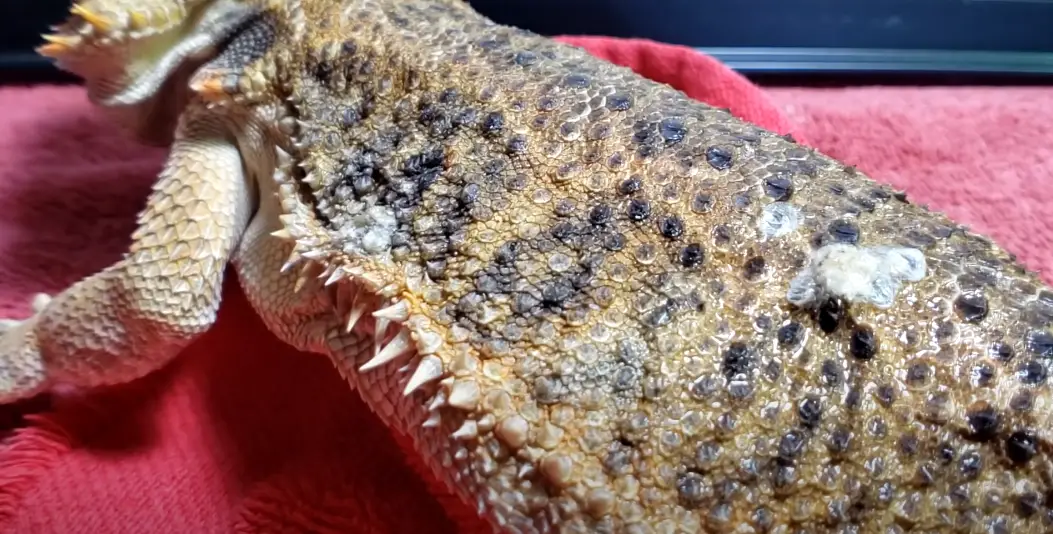
They may take a longer lie-in in the morning or go to bed earlier, but it shouldn’t make a significant difference. Consult an exotic vet if they are utterly sluggish and unusual in their over-sleeping and demeanor. There might be another underlying problem.
Can bearded dragons shed the damaged skin?
Beardies’ skin may get scarred, unclean, scraped and beaten as a result of their surroundings. To make room for a new protective layer, the old skin must be shed.
Is shedding a sign that your bearded dragon is fully healthy?
When it refers to shedding, your bearded dragon’s behavior is unpredictable and may be influenced by variables like nutrition, health, growth, and environment. This might, however, indicate that they aren’t getting enough calcium in their diet. Shedding may also be used to rid the skin of parasites.
Is it safe to hold your pet when it is losing skin?
As you may hold a beardie while it sheds, you should limit your handling time and only handle them when absolutely required. Shedding may be a stressful and unpleasant process for bearded dragons, and handling them too frequently may make it more challenging and even dangerous.
Important things to do when your bearded dragon is shedding
- Babies and young beardies tend to shed more than adult pets;
- Adult dragons usually shed in random patches. Once you may find a leg shed, then a tail;
- The shedding process may take up to a few weeks or may end in a few days. It is individual but if the shedding takes more than 3 weeks, consult a veterinarian;
- Pets may lose appetite during shedding or before it;
- They also tend to become more sleepy or even lethargic when losing old skin;
- The old skin may turn duller and darker when they shed;
- Eye bulging is also possible, especially when they shed the skin around the eye sockets;
- Some pets may even eat their shed if they have a deficiency in calcium. It is harmless to devour;
Related Video: Bearded Dragon Shedding Tips
Final thoughts
It’s your responsibility to figure out why your bearded dragon is shedding skin and what to do about it. Being a good owner includes knowing how frequently they shed, the behavior they’ll display, and how you may assist them.

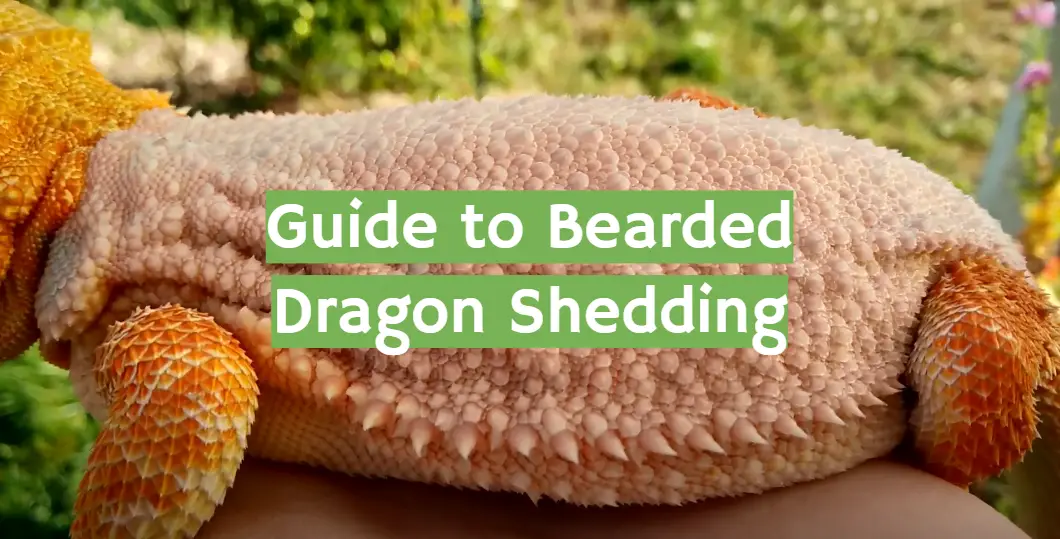
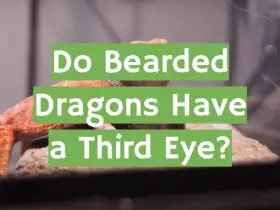

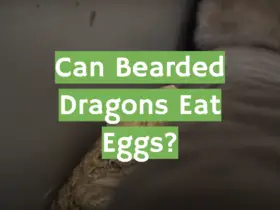
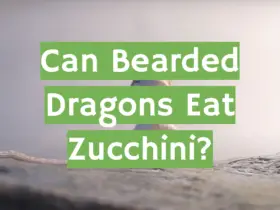
Leave a Review